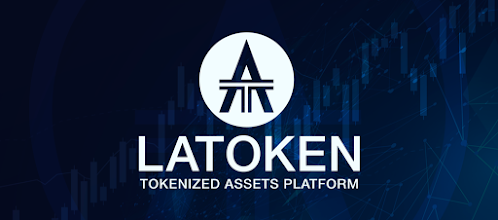Crypto News Today 05/08/2020 🗞

Crypto News Daily, August, 5th🗞
- Bitcoin Futures Data Shows Market Favors Bulls Despite $1.5K Flash Crash;
- Ethereum 2.0 Testnet Medalla Goes Live With 20,000 Validators;
- Opyn Removes Liquidity From Uniswap After $370K Stolen in DeFi Exploit;
- 100% of Chainlink Addresses Are Currently in Profit;
- Russian Voters’ Data on Sale After Blockchain Poll to Keep Putin in Power: Report;
Welcome to the Daily Crypto News: A complete Press Review, Coin Calendar and Trading Analysis. Enjoy!
Bitcoin Futures Data Shows Market Favors Bulls Despite $1.5K Flash Crash
The sudden $1,500 drop in Bitcoin (BTC) price on August 2 caused over $1 billion worth of liquidations on futures contracts and also led to a sharp decline in the price of many top altcoins.
This massive figure represents 18% of the total $5.6 billion open interest and undoubtedly caused the exaggerated move down to $10,560.
Interestingly, futures open interest recovered half of this loss in less than 48 hours, and currently sits at $5.2 billion. Meanwhile, derivatives indicators like contango (basis), funding rate, options 25% delta skew, and the put/call ratio are mostly unscathed.
Contango held steady
By measuring the 3-month futures contracts premium to current spot levels, one can infer whether professional traders are leaning bullish or bearish. A healthy market should display a slightly positive annualized rate, a situation known as contango.
Perpetual contracts funding returns to normal:
Perpetual futures, also known as inverse swaps, usually have funding rates collected every 8 hours. A positive rate indicates that longs are using more leverage than shorts, so that they will be paying such a fee.
Ethereum 2.0 Testnet Medalla Goes Live With 20,000 Validators
Ethereum 2.0’s “final” and “official” public testnet, Medalla, is now live, according to the Ethereum Foundation.
- Medalla is the final testnet before the launch of the Eth 2.0 network, which is tentatively expected by year’s end.
- The correct number of peers joined the tesnet to consider it workable, according to a tweet from the Ethereum Foundation’s Hudson Jameson.
- As reported by CoinDesk, Medalla was one of many Eth 2.0 testnets over 2019 and 2020. Unlike the other testnets, however, Medalla was public – meaning network validators were not centrally coordinated by developer teams.
- Over 20,000 validators have joined the network with some 650,000 ether (ETH) staked, according to the Beaconcha.in block explorer. (Each testnet uses its own tokens not equivalent to real ETH.)
- Eth 2.0 encapsulates years of research to switch the current Proof-of-Work (PoW) Ethereum network to a Proof-of-Stake (PoS) consensus algorithm. The expected launch later this year will be phase 0 of a multiyear overhaul.
Opyn Removes Liquidity From Uniswap After $370K Stolen in DeFi Exploit
Attackers exploited a Uniswap trading loophole to get away with more than $370K.
Attackers have exploited a vulnerability in the Opyn ETH Put contract to walk away with more than $370,000.
One of the first members of Crypto Twitter to report on the theft, DegenSpartan, stated on Aug. 4 that the traders used flash loans to buy Ethereum Put oTokens (oETH) from Uniswap. They then reportedly chose an ERC20 token — in this case, USD Coin (USDC) — as collateral and exercised the trading option.
Opyn realized something was happening within the day and issued a statement on Twitter, saying it had removed liquidity from Uniswap during its investigation.
Hey all, it seems like there has been an issue with some oTokens contracts. We are working hard on understanding this issue so we can let help users as best we can. We have removed liquidity from Uniswap in the mean time. Would be best to not open new vaults at the moment.— opyn (@opyn_) August 4, 2020
100% of Chainlink Addresses Are Currently in Profit
The recent Chainlink (LINK) rally has led to some unconventional results — 100% of its supply is “in the money” or profitable.
This metric simply represents a comparison between the asset’s current price and the price at which it was acquired. If the current price is higher, then it is “in the money”, if it is lower, then it is “out of the money”, and if it is the same, then it is “at the money”.
The question is, how can 100% of addresses be ‘in the money’ at the same time? This is highly unusual for any asset and is only partly explained by the parabolic rise of the asset. Every trade needs a buyer and a seller, so in theory some addresses should be ‘at the money’.
It’s possible the price was bid up on exchanges without any getting withdrawn to a wallet before the snapshot was taken. Alternatively, the proportion of addresses not ‘in the money’ at this time may be very small and rounded off to zero.
Another theory suggested on social media is that previous LINK purchasers (LINK marines) were the ones who pushed the coin to a new ATH, but as these addresses had bought previously, their average purchase price would be lower than the current price, pushing the address into profit.
Russian Voters’ Data on Sale After Blockchain Poll to Keep Putin in Power: Report
Hackers are reportedly selling the personal data of over a million Russians who voted electronically, using blockchain technology, during the recent constitutional amendment process.
Over 1.1 million data points were stolen and put on sale for $1.50 each on the online forums, the Russian newspaper Kommersant wrote. The data, consisting exclusively of passport numbers, has little value on its own, the anonymous sellers admitted to Kommersant. But such data can be used for phishing attacks when combined with information from other leaked databases.
Moscow’s Department of Information Technologies, which is responsible for the design of the voting system, denied the report in an email to CoinDesk.







Comments
Post a Comment